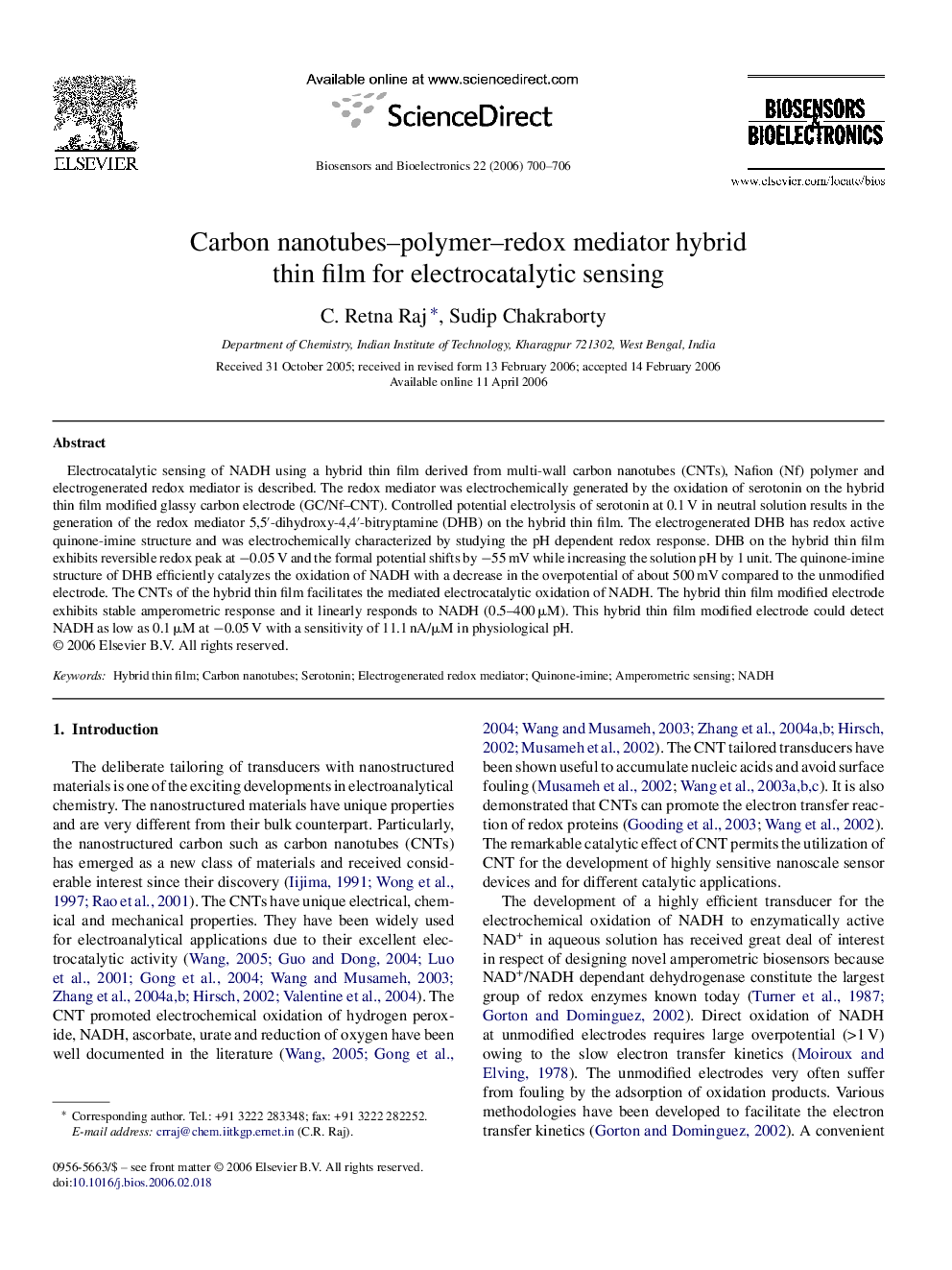| Article ID | Journal | Published Year | Pages | File Type |
|---|---|---|---|---|
| 869494 | Biosensors and Bioelectronics | 2006 | 7 Pages |
Electrocatalytic sensing of NADH using a hybrid thin film derived from multi-wall carbon nanotubes (CNTs), Nafion (Nf) polymer and electrogenerated redox mediator is described. The redox mediator was electrochemically generated by the oxidation of serotonin on the hybrid thin film modified glassy carbon electrode (GC/Nf–CNT). Controlled potential electrolysis of serotonin at 0.1 V in neutral solution results in the generation of the redox mediator 5,5′-dihydroxy-4,4′-bitryptamine (DHB) on the hybrid thin film. The electrogenerated DHB has redox active quinone-imine structure and was electrochemically characterized by studying the pH dependent redox response. DHB on the hybrid thin film exhibits reversible redox peak at −0.05 V and the formal potential shifts by −55 mV while increasing the solution pH by 1 unit. The quinone-imine structure of DHB efficiently catalyzes the oxidation of NADH with a decrease in the overpotential of about 500 mV compared to the unmodified electrode. The CNTs of the hybrid thin film facilitates the mediated electrocatalytic oxidation of NADH. The hybrid thin film modified electrode exhibits stable amperometric response and it linearly responds to NADH (0.5–400 μM). This hybrid thin film modified electrode could detect NADH as low as 0.1 μM at −0.05 V with a sensitivity of 11.1 nA/μM in physiological pH.
